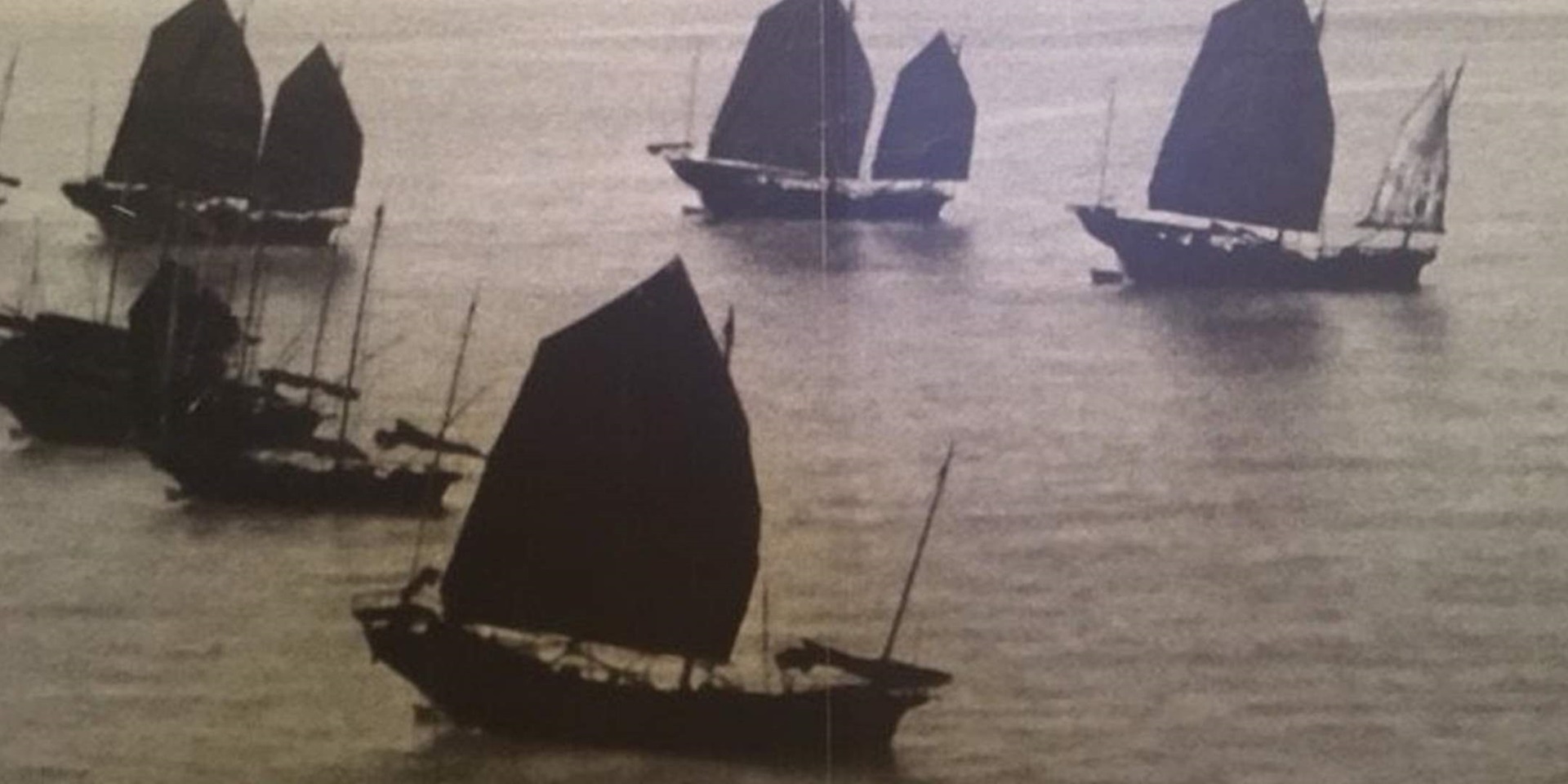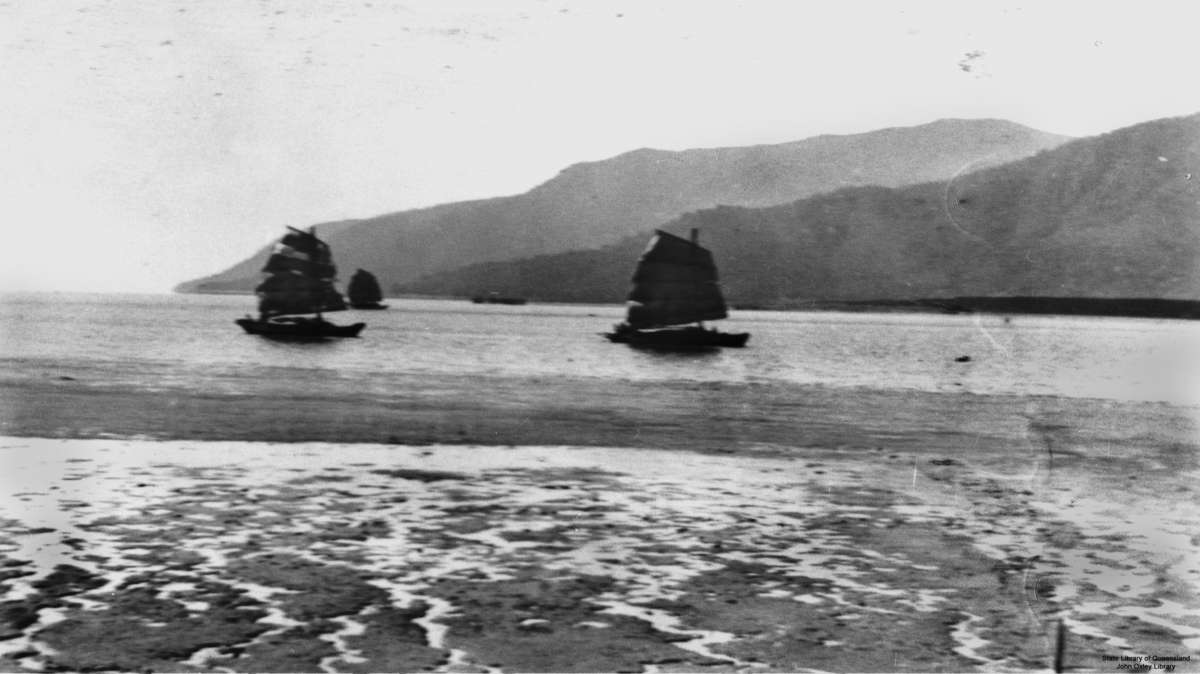

A section from a panorama of Hong Kong, circa 1940. Courtesy of the Hong Kong Maritime Museum.
Celebrating maritime connections between China and Australia
On July 11 in the year 1405 Admiral Zheng He’s Grand Fleet of over 300 ships with 28,000 crew departed China on the first of several expeditions through Southeast Asia and the Indian Ocean. The expeditions were aimed at establishing Chinese influence over long established trade routes, now often referred to as the ‘Maritime Silk Road’. The 600th anniversary of the date of the commencement of the first of these massive expeditions – July 11 – was chosen in 2005 as the annual China National Maritime Day. The Institute of Ancient Chinese Ships has led a conference on Chinese maritime history on this day for the last ten years, with a different international focus each year. Last year was the UK, and this year it was Australia’s turn. The Australian National Maritime Museum’s director Kevin Sumption was invited to deliver a keynote presentation on ‘Chinese Connections at the Australian National Maritime Museum’ and I was invited to give a paper on my research into Chinese watercraft built in Australia between 1870 and 1910.

From right: Zefeng You (Institute of Ancient Chinese Ships), Kevin Sumption (Director and CEO of the Australian National Maritime Museum) and Shaoxiong Lin (Shanghai University) taking audience questions after their keynote talks opening the 10th ‘Sailing for More’ conference at Ningbo, China. Image: Stephen Gapps/ANMM.
Junks and sampans in Northern Australia
My research into Chinese junks and sampans that were built in Australia has been further developed with the assistance of museum volunteer researcher and history graduate Aliza Chin. Aliza has been looking at newspaper reports of junks and sampans in Australia. My previous focus was on the huge numbers of these vessels constructed in northern Australia in the late 19th and early twentieth centuries. However, Aliza has found some interesting new material around the prominence of these vessels in the strong anti-Chinese sentiment that arose in Australia during this period.
Perhaps with the knowledge of the sailing capabilities of the famous Foochow trading junk Keying that sailed from China around the Cape of Good Hope to the United States and then Britain in 1848, in the late 19th century some Australian commentators suggested whole fleets of Chinese junks could arrive on Australia’s shores, particularly the undefended coast of Western Australia. While the story of anti-Chinese sentiment during the goldrushes is now well known, the element of a fear of Chinese invasion at this time is not.

The Chinese Junk Keying, Captain Kellet, PW7738. The Keying had a crew of 12 British and 30 Chinese sailors with co-Captain So Yin Sang Hsi. Royal Museums Greenwich Collection.
The colonisation of Australia’s north by the British during the 19th century was always fraught with the tension of the need for a cheap migrant labour force and the desire to keep Australia ‘white’. The extensive use of Chinese junks and sampans in trade and transport in far north Queensland and later in Darwin allowed the opening of these areas for closer settlement. At the same time, it seems to have fuelled fears that fleets of junks could easily bring thousands of Chinese settlers, rather than more transitory goldseekers.

A fleet of Chinese junks at Cairns in northern Queensland, circa 1895. Sights such as this may well have fuelled fears of Chinese invasion in the 1890s. John Oxley Library, State Library of Queensland.
Further research into the prominence of Chinese watercraft in late 19th century Australia and the role of sea-going junks in anti-Chinese sentiment continues and will be the subject of future posts.
The museum’s connections with Chinese maritime history will be complemented by connections with Chinese art and artists on show at the museum in November 2018 in an environmental art program called ‘On Sharks and Humanity’, developed by Parkview Arts Action.
– Dr Stephen Gapps, Curator




